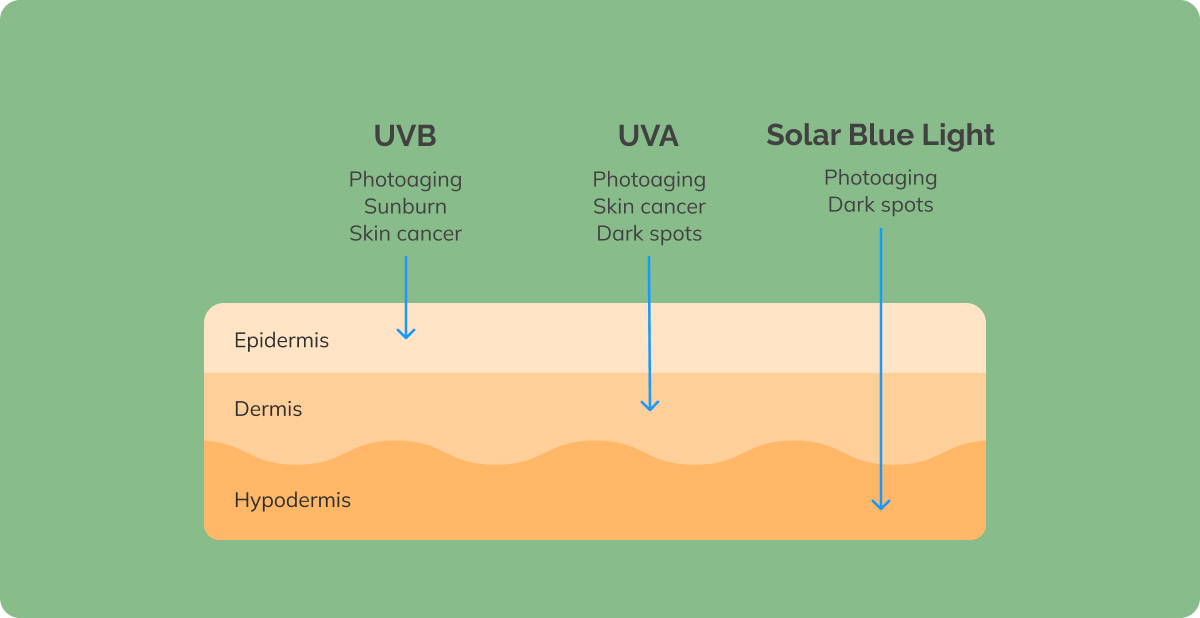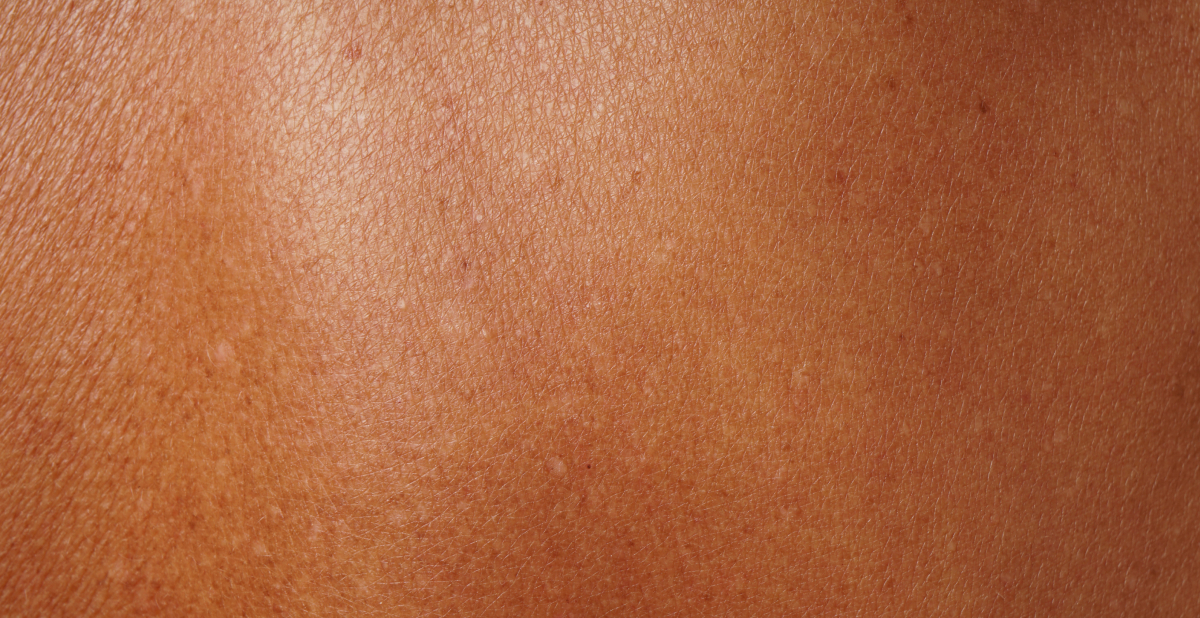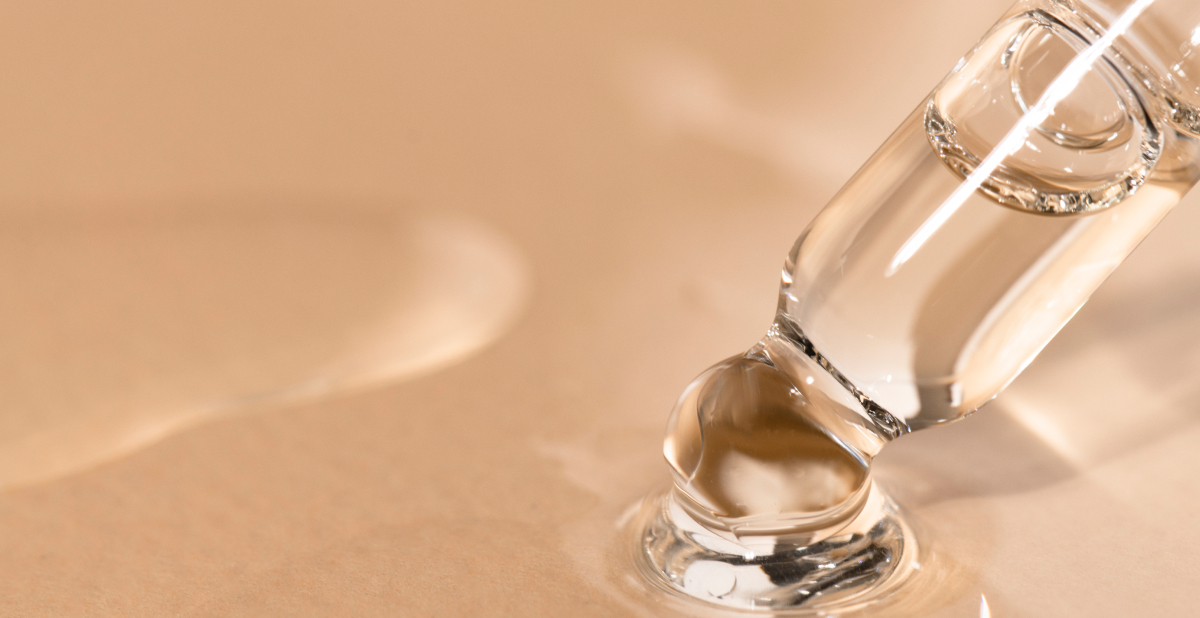When you hear the word layers, you might think of cozy sweaters or your favorite haircut trend. But your skin’s layered structure is a bit more complex—not to mention vital to its health, well-being, and appearance.
Understanding how your skin is built, how it functions, and how it changes over time helps you care for it in a deeper, more intentional way. So let’s explore the layers of skin, how they work, and how to support each one—starting from the bottom and working our way to the surface.
How many layers of skin do you have?
Your skin has three main layers: the hypodermis, dermis, and epidermis. Each layer plays a unique role in maintaining skin health, and together, they form the body’s largest organ.
To keep things simple, you can think of the skin structure like a well-thought-out winter outfit:
- The hypodermis, also called the subcutaneous layer, is your thermal base layer—it insulates and cushions.
- The dermis, the middle layer of the skin, is your cozy knit—it provides strength and structure.
- And the epidermis is your sleek, weatherproof shell—protecting you from the outside world.
And just like your winter wardrobe, these layers change with time. As we age, each skin layer undergoes natural changes in thickness, elasticity, hydration, and function. But with the right care, you can support your skin at every stage.

What is the skin made of?
Beyond its three layers, your skin is a dynamic structure made up of:
- Water (around 64%)
- Proteins like collagen, elastin, and keratin
- Lipids that form the skin’s protective barrier
- Cells including keratinocytes, melanocytes, fibroblasts, immune cells, and more
- Glands, nerve endings, and capillaries that regulate temperature, sensation, and hydration
The epidermis, dermis, and hypodermis work together to perform over a dozen essential functions every day—from preventing infection to regulating body temperature, and even expressing emotions.

What are the different layers of skin?
Let’s break down the three key skin layers—what they’re made of, how they function, and how they evolve over time.
Hypodermis: the deepest layer
Also known as subcutaneous tissue, the hypodermis works as your body’s natural energy reserve.
This layer is mainly composed of fat and connective tissue, giving skin its volume and shape. It also cushions and protects muscles, bones, and organs.
Even more impressive? It acts as a natural insulator—just like a thermal base layer—keeping you warm and protected from the cold.
Key functions:
- Stores energy
- Provides insulation
How it changes over time:
- Fat volume decreases, especially in the face, leading to a loss of firmness and smoothness.
- Fat redistribution may lead to the appearance of sagging.
How to care for it:
Healthy lifestyle choices—like getting quality sleep, balanced nutrition, and regular exercise—play a big role in supporting overall skin health, even in its deepest layers.

Dermis: the middle layer of skin
The dermis sits between the epidermis and hypodermis. Think of it like your cozy knit sweater—providing structure, strength, and elasticity.
This layer is about ten times thicker than the epidermis and is rich in blood vessels, connective tissue, and nerve endings—making it responsible for your sense of touch.
It also houses the extracellular matrix, which contains three key players: collagen fibers, elastin fibers, and proteoglycans. Collagen gives structure, elastin provides flexibility, and proteoglycans help skin retain moisture (they can hold up to 1000 times their molecular weight in water!).
Plus, the dermis includes sebaceous and sweat glands, which help regulate temperature and play a role in blemishes and breakouts.
Key function:
- Provides elasticity, volume, and strength
How it changes over time:
- Collagen and elastin fibers break down, reducing skin’s firmness and elasticity
- Proteoglycan levels decrease, leading to dryness
How to care for it:
Hydration is key. Look for hydrating serums and ampoules that support firmness and elasticity—especially those formulated with proteoglycans and pre-proteoglycans.

Epidermis: The outer layer
The epidermis is your first line of defense against the environment—like a sleek, waterproof raincoat. Despite being as thin as a sheet of paper, it helps shield you from external aggressors like pollution, bacteria, and harsh weather.
It’s mostly made up of keratinocytes, cells packed with keratin (a familiar fibrous protein). These cells are stacked like bricks and held together by a mix of fatty acids and water, forming your skin barrier—a wall of protection for the skin.
As keratinocytes move from the bottom of the epidermis to the surface, they mature and eventually shed naturally—supporting your skin’s renewal process.
Another vital role of the epidermis? Melanogenesis. This process helps your skin respond to UV radiation by producing melanin, which also influences your skin’s tone and natural level of sun defense.
Key function:
- Protects skin from environmental aggressors
How it changes over time:
- Slower cell turnover can lead to a rougher texture
- Daily skin stressors may contribute to fine lines and wrinkles
- Uneven melanin distribution can cause dark spots
How to care for it:
Exfoliation encourages healthy renewal and can smooth texture and brighten the appearance of skin. Pair it with an antioxidant-rich serum to help neutralize free radicals and support repair.

Here’s how to protect every layer
No matter your age or what skin type you have, the most powerful daily habit for supporting all three layers of skin is simple: Apply broad-spectrum sunscreen daily—rain or shine.
UV exposure is a leading cause of collagen breakdown, uneven pigmentation, and visible aging, as well as more serious concerns such as skin cancer. So give your skin an extra layer of protection every single day.
Your skin, understood
Knowing what your skin is made of helps you make informed decisions for your routine. From exfoliating the outermost layer of the epidermis to hydrating the middle layer to nourishing the deepest layer, every step you take can support your skin’s natural strength and beauty.
Remember, your skin does a lot for you. Do your best to take care of it—layer by layer, day by day.

References
Paul A.J. Kolarsick, BS, Maria Ann Kolarsick, MSN, ARNP-C, and Carolyn Goodwin, APRN-BC, FNP. (n.d.). 1 SS skin cancer chapter 1 – ons | ons.org. https://www.ons.org/. Retrieved February 8, 2022, from https://www.ons.org/sites/default/files/publication_pdfs/1%20SS%20Skin%20Cancer_chapter%201.pdf Videira IF, Moura DF, Magina S. Mechanisms regulating melanogenesis. An Bras Dermatol. 2013;88(1):76-83. doi:10.1590/s0365-05962013000100009 Skin: Layers, structure and function. Cleveland Clinic. (n.d.). Retrieved February 8, 2022, from https://my.clevelandclinic.org/health/articles/10978-skin


